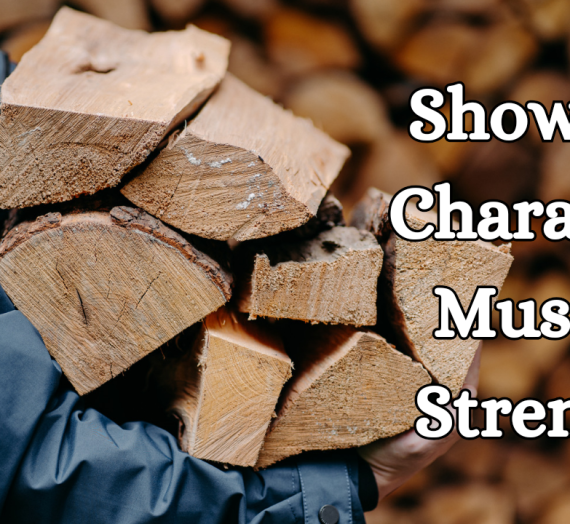Most people know flash floods can be dangerous, but many do not know the difference between a flood and a flash flood. Well, today, we are going to discover what exactly flash foods are, what makes them so deadly, how to spot the signs of where they might be, how to avoid them, and what to do if you are caught in a flash flood. Without further ado, let’s get into this!
Flooding is when a river rises because of heavy rains, whether locally or up the river. Flash floods are caused when it rains in large amounts faster than the ground can absorb the water. This can be from slow-moving thunderstorms, several storms moving over the same area in quick succession, hurricanes, or tropical storms. In some instances, if a normal pathway for water is blocked by some type of debris, it can cause flash flooding in the area around the blockage. Water will take the easiest path, and wherever that is, is where the flash flood will go.
While flooding from a river is usually more predictable in when or how fast it will rise, a flash flood can happen in an instant. You see, while it may be raining where you are, upstream or wherever your water is coming from could have already received several inches of rain. As this water travels downstream, it collects more water with the added rain.
Flash floods can happen in a few hours or even a few minutes. Even in a dried-up area upstream of there, in a low-lying ditch, it could have gathered enough rain to cause a large, fast-moving flash flood that could carry people away in the current or even knock cars off the road. Flash floods are known for the debris they carry, and the debris is dangerous to anyone caught in the water. Debris could be under the water and could cause injury or entanglement. Being injured in flood water can lead to drowning, just as being entangled can.
Flash floods are common in my area, and I have personally dealt with a few of these. One memorable one, I was in a truck following another truck about 100 feet behind it. The truck in front of us made it over a low-water bridge. However, water gushed over the road so quickly, we did not have time to stop, and it was already two feet high when we hit the water at 45 MPH. Thankfully, all it did was slow down the truck to about 30 MPH and did not knock us off the road, but that is how fast the water can come up.
Nighttime is a deadly time to deal with this too. Water rises quickly; if it is dark, you might not see it until it is too late. This is how many people get swept off the road during flash floods. They could not see it on the road at night.
Another thing to know is that flash floods have very swift-moving currents. It is easy to knock an adult over with 18 inches of water. This is especially dangerous for kids. Being swept downstream can cause you to be knocked into things or even drag you underwater. I have personally seen a car sent off the road with roughly 6 inches of swift-moving water. If it can move a car, it can carry a person away.
Even in the country, we have whistles under our low-water bridges. A whistle is what we call the round concrete holes that allow the water to go under the low-water bridge, driveway, cropland, or wherever it might be. In other places they are called a culvert. These are known for having wildlife get sucked in during flash floods, and it is almost guaranteed the wildlife will sadly drown. Even here, we keep our kids far away from whistles if there is any sign of rain.
What are the signs of a potential flash flood, you ask? The first thing to remember is that it does not need to rain in your location to risk a flash flood. If you heard thunder in the distance, you should be paying attention. This would be even more true in historical or a post-apocalyptic story since there would be no warnings for flash floods, like today. At least in my area, there are.
Other things to look for are streams, ditches, rivers, or other areas that have water start to rapidly rise or become muddy. If twigs, sticks, or other debris start floating; or if you hear a roar coming down the waterway, it is a sign there is a large deadly gush of water coming.
Now, you might be wondering how you identify areas prone to flash floods, which really depends on the area of the world and the terrain you are in. Some common signs include looking for low-lying areas, areas close to streams and rivers, canyons, dry streambeds, and rivers.
Things that are not always so commonly looked for are plants that are typically grown close to the water and seem out of place. Willow trees, cattails, and persimmons trees are the ones I can think of in tornado alley. Still, these will be native to the area of the world you are writing about, so keep that in mind and research the area. Also, if you see bundles of sticks, grass, or other things on the same side of several trees, a fence, or something similar, these are signs of a flash flood. It is the leftover debris from the last flash flood.
Man-made signs include the ones/those that say, “road may flood,” “impassable during high water,” “impassable when flooded,” “subject to flooding,” “high water,” “flooding ahead,” “when flooded, turn around don’t drown,” and many more. Also, “road closed” may be seen at low-water bridges. In fact, many of the low-water areas here have a swinging gate that can close the road off on each side of a low-water area.
The best thing to do to stay safe is to avoid low-lying areas when there is a risk. If your character must be there, moving to higher ground as soon as they notice any warning signs, such as the water rising quickly or a roaring sound, might save your character’s life. If your character is driving and they come to water over the road, it is always safest to turn around and go a different way. The saying here is, “Turn around, don’t drown.”
But what should your character do if they are caught in a flash flood? I’m glad you asked! First, don’t go into the water! I can’t emphasize that enough. If possible, get to higher ground as fast as possible. I’ve heard getting on top of boulders, but that might depend on the water’s depth and the boulder’s height. The stability or instability of the boulder would be another thing to consider. Another possibility is to climb a tree as quickly as possible and stay there until the water goes down and it is safe to leave or rescue comes.
If you’re in a car, stay out of the water! As they say here, “Turn around, don’t drown.” Only one foot of water can stall a car, and two feet can sweep a vehicle off the road. Also, the water can cover up places that have been swept out by the water, and there could be car-sized holes in the road you can’t see.
A plus side is if you’re in a car, you can drive away from the flood waters. The downside is that the vehicle can only go on the roads. So while you can move much faster, you might not be moving in a safe direction. Something to think about if you are writing suspense.
If your character is in a car that is swept off the road, they should immediately roll down the window or break it if needed. Then climb on top of the vehicle and call 911, assuming that cell phones have been invented at the time of your story. Remember, people are more likely to drown inside cars than on top of them. Plus, rescuers or someone passing by who can get help are more likely to see someone on top of a car than in it.
But what if your character ends up in a flash flood. Whether they were on foot or in a car that was swept off the road, some things can help. First, try to find something sturdy to grab onto. Trees are the most common thing, but telephone poles, tall rocks, or a boulders could be used.
If that is not an option, then there are things to help survival, thought not a guarantee. These include pointing your feet downstream. You will die if you smack your head and go unconscious in the water. Another is to remember to always go over debris and never under. Never go underwater if you have a choice. Grab whatever you can that is stable and will stop you from being carried downstream anymore. Then hold on. I’ve personally known people who spent ten hours clinging to a tree before the water went down because they knew how dangerous being in the water was. The most important thing is, don’t panic. If you panic, you are likely to make mistakes, and those could be deadly.
Interesting side note, if you write mystery, a flash flood could be a great way for your bad guy to cover up a murder. Without going into graphic detail, however, the way the blood settles in a body after someone has passed has a distinct look. This could potentially tip off the good guy that this person did not drown in the flash flood.
Fun fact: Flash flooding can happen in most areas of the world, including deserts, mountains, coastal regions, forests, and rural and urban areas.
What could possibly go wrong:
Likely to go wrong: Your character is too close to the water or ditch when a flash flood hits, and they die. It could be a child character playing with his friends, and one of his friends drowns, and that is what propelled him to later work in water rescue, or maybe he is afraid of water as an adult. It is sometimes common for homeless people to sleep in the culvert or sewers. These places could be very long or twisting, and being slammed into the concrete walls has to hurt.
Likely to go wrong: Your character is driving in the dark and takes a blind turn into a flash flood that they didn’t see or didn’t see until it was too late.
Possible to go wrong: Your character is swept off the road in a car, and once on top of the vehicle, they have no way to call for help and have to stay there until the water recedes. It is less likely in today’s world, but if you are writing before cell phones, it is a good possibility.
Possible to go wrong: Your character is driving and tries to cross an area that is covered in shallow water. However, once they enter the water, they find it is deeper than expected. They could stall the car, be stuck, or even be swept off the road.
Unlikely to go wrong: Your character tries to go through water only to find the pavement has eroded away under the water, and they are either stuck or sink into the hole.
Unlikely to go wrong: Your character is camping and misses or ignores the signs that it is a flood area. In the night, a flood comes up.
Improbable but technically still in the realm of possibilities: Your character is thrown around in the debris, breaking bones, and still, somehow, they make it out alive. It has been done before, but compared to the number who drowned in these cases, it is a small number of people.
Improbable but technically still in the realm of possibilities: Your character is in the water and uses their pants for a floatation device. Yes, you can use your pants like this, and I have family who has survived in the ocean like this. However, it would be very hard to take your pants off, swing them just right over your head, and then tie them off in swift-moving water while keeping your head above water and not hitting any debris. Very difficult but technically possible.
Helpful Links to Learn More:
Flash Floods 101:
https://www.weather.gov/phi/FlashFloodingDefinition
Signs of a Flood Region:
https://www.sunnysports.com/blog/identify-flash-flood-region/
Do’s and Don’ts of a Flood:
http://www.imdnagpur.gov.in/docs_general/Floods_Dos_and_Donts.pdf
How to Survive a flash flood:




